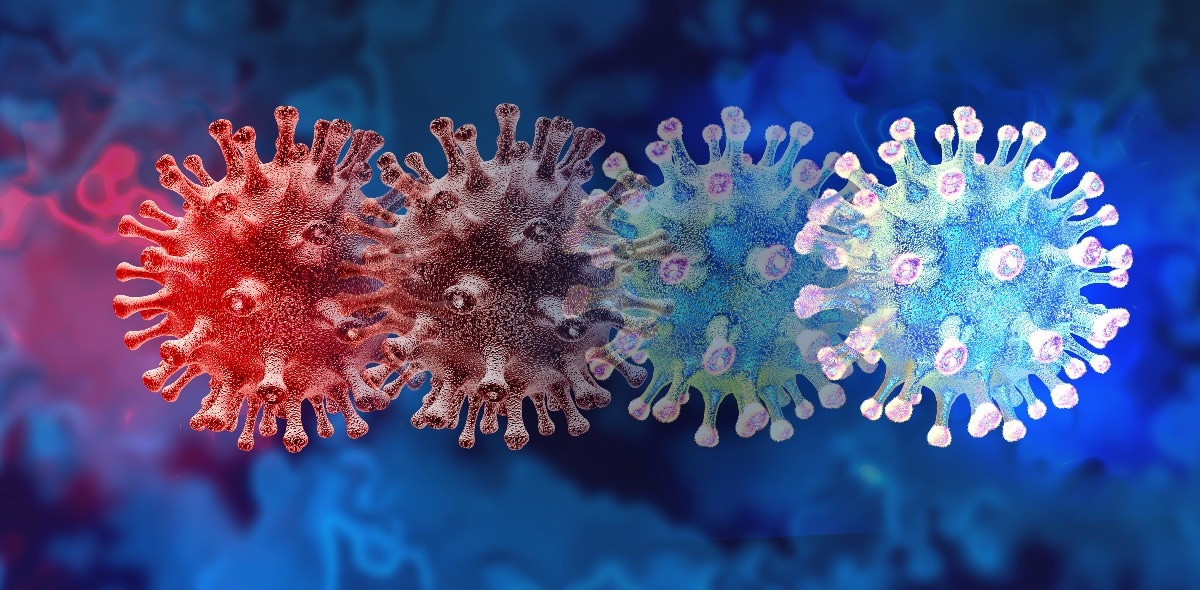 Study: Entropic overcompensation of the N501Y mutation on SARS-CoV-2 S binding to ACE2. Image Credit: Lightspring/Shutterstock
Study: Entropic overcompensation of the N501Y mutation on SARS-CoV-2 S binding to ACE2. Image Credit: Lightspring/Shutterstock

 This news article was a review of a preliminary scientific report that had not undergone peer-review at the time of publication. Since its initial publication, the scientific report has now been peer reviewed and accepted for publication in a Scientific Journal. Links to the preliminary and peer-reviewed reports are available in the Sources section at the bottom of this article. View Sources
This news article was a review of a preliminary scientific report that had not undergone peer-review at the time of publication. Since its initial publication, the scientific report has now been peer reviewed and accepted for publication in a Scientific Journal. Links to the preliminary and peer-reviewed reports are available in the Sources section at the bottom of this article. View Sources
About the study
In the present study, researchers evaluated the effects of the N501Y mutation on the enthalpy and entropy of binding of SARS-CoV-2 S RBD to ACE2 using all-atom molecular dynamics (MD) simulations along with free-energy calculations.
Five different systems were modelled for this study: sRBD, sACE2, sRBD:sACE2, sRBDN501Y, and sRBDN501Y:sACE2. In order to distinguish between different systems, the team referred to the systems having the N501YsRBD mutation as "mutant" and those with the SARS-CoV-2 Wuhan strain sRBD sequence as "wild-type (WT)." Nanoscale molecular dynamics (NAMD) was used to perform equilibrium MD simulations for 40 ns. Three replicates of each of these systems were simulated.
Carma was used to calculate entropic contributions. An approximation of the maximum absolute entropy was derived by choosing heavy atoms in residues at the sRBD:sACE2 interface that fit corresponding trajectories in the N501YsRBD as well as WT mutations. Interatomic lengths and total hydrogen bond occupancy were assessed using visual MD (VMD). A distance-based approach was utilized to identify hydrogen bonds, whereby two residues are considered to be H-bonded if the distance between their corresponding heavy atoms is 3.3 Å or less across 30 ns of equilibrated MD trajectory per copy. Each system interface's heavy atoms were evaluated using their respective nearest neighbor atomic distance from the partner residue. A normal mode analysis (NMA) was also performed.
Results
The study results showed that the N501YsRBD mutation rendered the entropy of binding more favorable while decreasing the enthalpy of binding. By quantifying and categorizing interactions between residues at the protein-protein interface, the team defined the enthalpic contributions to the binding. Furthermore, distributions of the closest interatomic distance for each pair of residues at the interface were computed.
The ACE2 residue K353 showed the first impact of N501Y. In the WT and mutant systems, K353sACE2 interacted with the sRBD residues in different ways. K353sACE2 changed its H-bonding preference from the side-chain hydroxyl of Y501sRBD in the mutant to the backbone carbonyl of G496sRBD in the WT. Furthermore, the interatomic density distributions noted from the final 30 ns of the MD simulations showed that both of these H-bonds were fairly well filled.
The team demonstrated that the mutant developed a sporadic peripheral H-bond between Y83sACE2 and Y489sRBD. Following the N501YsRBD mutation, the overall pattern of alterations in the H-bonding associations between sACE2 and sRBD showed a reduction in more centrally situated H-bonds and an increase in more peripherally located H-bonds. Overall, the mutant system had a considerably less favorable enthalpy of binding than the WT system, which is consistent with the findings that showed that the binding enthalpy is less favored for the mutant system.
The correlations noted between sACE2 and sRBD are lower in the mutant system than in the WT. Additionally, the mutant exhibited a weaker ACE2-to-ACE2 relationship as compared to that in the WT. This indicated that while an insignificant amount of binding enthalpy was sacrificed, the alteration in the arrangement of interprotein H-bonds caused by mutation was correlated to the poor dynamic coupling between the two proteins. Moreover, in comparison to the mutant, the WT complex exhibited significantly more correlated fluctuations at the protein-protein interface.
According to NMA, variations observed in correlations were due to the large-scale relative motion exhibited by the two proteins, which was significantly more prominent in the mutant than in WT. The team observed that the mutant complex displayed a bending motion about the protein: protein junction which was significantly more flexible on a large scale. This also supported the finding that the mutant's binding entropy was more entropically favorable than that of the WT.
Conclusion
The study findings showed that the extent to which fluctuations were distributed across the complex is a crucial factor in the determination of protein-protein binding affinity. Furthermore, the team noted that the residue mutations that initially appeared to give rise to weaker interactions than those in their wild-type counterparts could actually increase binding affinity since the residue mutations suppressed unfavorable entropy changes during binding.

 This news article was a review of a preliminary scientific report that had not undergone peer-review at the time of publication. Since its initial publication, the scientific report has now been peer reviewed and accepted for publication in a Scientific Journal. Links to the preliminary and peer-reviewed reports are available in the Sources section at the bottom of this article. View Sources
This news article was a review of a preliminary scientific report that had not undergone peer-review at the time of publication. Since its initial publication, the scientific report has now been peer reviewed and accepted for publication in a Scientific Journal. Links to the preliminary and peer-reviewed reports are available in the Sources section at the bottom of this article. View Sources